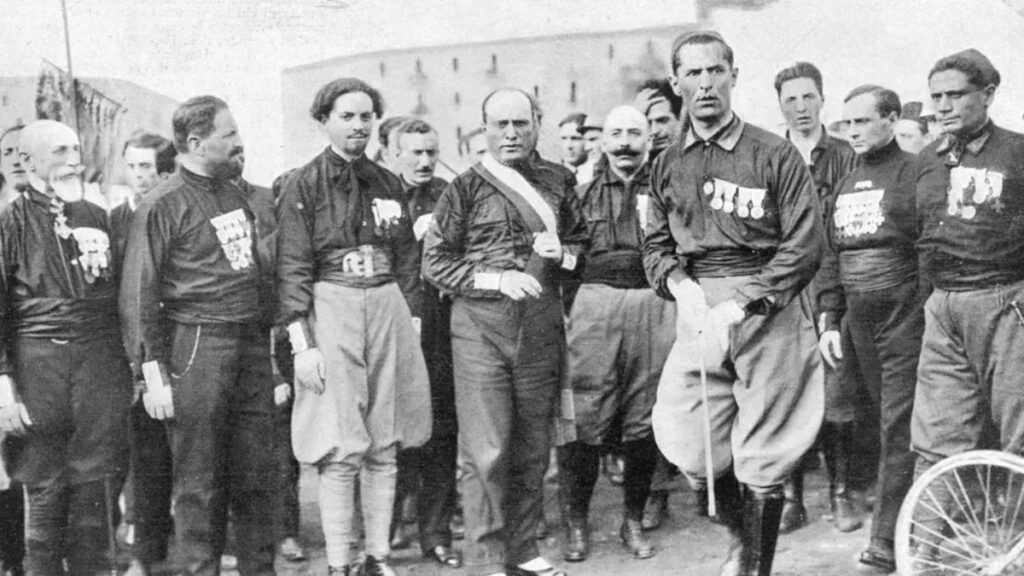Introduction to Fascism and its Origins
Fascism, a term that evokes strong emotions and vivid images of the past, has left an indelible mark on history. Emerging in the early 20th century, fascism rose to prominence in various forms across Europe and beyond. But what exactly defines this movement? At its core, fascism is characterized by authoritarian power structures, aggressive nationalism, and often a disdain for liberal democracy.
The roots of fascism can be traced back to social upheaval following World War I. Economic instability and political chaos created fertile ground for radical ideologies to take hold. As societies grappled with uncertainty, certain key figures emerged as charismatic leaders who shaped the course of this powerful movement.
In this exploration of “fascisterne,” we will delve into some influential personalities who played pivotal roles in defining fascist ideology and practice. Their legacies continue to spark discussions today about power, control, and human rights around the world. Let’s embark on a journey through their lives and contributions—who were they really? And how did they shape the landscape of one of history’s most contentious movements?
Benito Mussolini: The Father of Fascism
Benito Mussolini, born in 1883, is often hailed as the father of Fascism. His political journey began in Italy, where he initially embraced socialism before shifting to a more authoritarian ideology.
Mussolini founded the National Fascist Party in 1921. He believed in strong centralized power and rejected democracy. With his charismatic oratory skills, he captivated many Italians who craved stability after World War I.
His regime promoted aggressive nationalism and militarism. Mussolini sought to revive Italy’s glory through expansionist policies. The famous phrase “Believe! Obey! Fight!” became synonymous with his rule.
Under his leadership, Italy invaded Ethiopia and aligned itself with Nazi Germany during World War II. Mussolini’s influence extended beyond Italian borders, inspiring similar movements across Europe.
His legacy remains controversial; some view him as a visionary leader while others see him as a tyrant whose actions led to immense suffering.
Adolf Hitler: The Face of Nazi Fascism
Adolf Hitler stands as one of the most notorious figures in history, embodying Nazi fascism’s darkest elements. Rising to power in Germany during the 1930s, he manipulated economic turmoil and national discontent to establish a totalitarian regime.
His charismatic oratory skills captivated millions. Hitler promised restoration of national pride and prosperity, leading many to rally behind his extreme ideologies. Central to his vision was an aggressive nationalism that scapegoated minorities, particularly Jews.
Under his leadership, the Nazi party implemented policies that emphasized militarization and expansionism. This aggressive stance ultimately led Europe into World War II.
Moreover, Hitler’s reign resulted in horrific atrocities like the Holocaust—an attempt at ethnic cleansing that left deep scars on humanity. His legacy remains a chilling reminder of how fascist ideologies can corrupt societies and lead to unimaginable suffering.
Francisco Franco: The Spanish Fascist Leader
Francisco Franco was a pivotal figure in the landscape of fascism, particularly within Spain. Rising to power during the Spanish Civil War, he led a coalition of nationalist forces against the democratically elected Republican government.
Franco’s regime was marked by authoritarian control and repression. He implemented policies that suppressed dissent while promoting nationalism and Catholic values. His rule lasted for nearly four decades, shaping modern Spanish identity through fear and propaganda.
The impact of his leadership extended beyond government; it influenced cultural norms and societal structures. Even after his death in 1975, Franco’s legacy continued to provoke debate about nationalism, fascism, and democracy in Spain.
His complex character remains a subject of scrutiny among historians today. The scars from his dictatorship linger on as Spain continues to grapple with its past.
Oswald Mosley: The British Fascist Party Founder
Oswald Mosley emerged as a controversial figure in British politics during the early 20th century. Initially a member of the Conservative Party, he became disillusioned with traditional political avenues and sought to establish his own identity.
In 1932, he founded the British Union of Fascists (BUF). Inspired by Mussolini’s movement in Italy, Mosley adopted striking imagery and rallies that captured public attention. His speeches were passionate, drawing crowds eager for change amidst economic turmoil.
However, Mosley’s ideology was steeped in nationalism and anti-Semitism. This attracted both supporters and fierce opponents. His attempts to integrate fascist principles into British society polarized opinions across the nation.
Despite gaining some traction initially, public sentiment shifted dramatically after World War II began. The BUF’s influence waned significantly as Britain grappled with its own moral compass during wartime turmoil.
Giovanni Gentile: Coined the Term
Giovanni Gentile played a pivotal role in shaping the ideology of fascism. As an Italian philosopher, he was instrumental in defining and articulating its principles. His philosophical work laid the groundwork for what would later be recognized as fascist doctrine.
Gentile is often credited with coining the term “fascismo.” He believed that a strong state could unify individual interests under a collective national identity. This idea resonated deeply during Italy’s tumultuous political climate in the early 20th century.
His writings emphasized action over theory, promoting an aggressive nationalism that sought to reshape society. Gentile’s influence extended beyond academia; he became one of Mussolini’s key advisors.
Through his ideas, he contributed significantly to how fascism evolved and spread across Europe, leaving an indelible mark on history. The term itself has since become synonymous with authoritarian regimes worldwide, illustrating Gentile’s lasting impact on political thought.
Impact of These Key Figures on the Spread of Fascism
The influence of key figures on the spread of fascism cannot be overstated. Each leader brought a unique vision that resonated with different populations, helping to cement fascist ideologies across Europe and beyond.
Mussolini’s aggressive tactics in Italy inspired many who sought a strong alternative to traditional political structures. His charismatic speeches and nationalist rhetoric galvanized followers and emboldened similar movements elsewhere.
Hitler’s reign further revolutionized these ideas, intertwining them with dangerous elements like anti-Semitism, which became central to Nazi ideology. His regime showcased how propaganda could manipulate public sentiment effectively.
In Spain, Franco exemplified the adaptation of fascist principles within a civil conflict context. He consolidated power through military might while fostering an environment hostile to dissent.
Leaders such as Oswald Mosley in Britain attempted to replicate this model on their home turf, demonstrating the contagious nature of these ideologies across borders and cultures. Fascism found fertile ground wherever discontent brewed.
Conclusion
Fascism, a complex and often misunderstood ideology, has left an indelible mark on history. The key figures we explored each played a crucial role in shaping the movement and spreading its influence across various nations. Benito Mussolini’s vision laid the groundwork for what fascism would become. Adolf Hitler took that vision to horrifying extremes with Nazi Germany. Francisco Franco’s reign illustrated how fascist principles could be applied within a civil conflict context.
Oswald Mosley brought these ideas to Britain, attempting to establish fascism in a different cultural landscape. Giovanni Gentile provided the intellectual framework that defined much of early 20th-century fascist thought by coining the term itself.
These leaders not only shaped their respective countries but also influenced global perceptions of governance and authority. Their legacies remind us of both the appeal and dangers of totalitarian ideologies like fascisterne as they seek control over individuals’ lives through nationalism, militarism, and suppression of dissent.
Understanding this historical context is vital for recognizing patterns in contemporary politics today. Reflecting on these figures invites critical thinking about power dynamics in our own societies while remaining vigilant against similar ideologies resurfacing in modern times.





